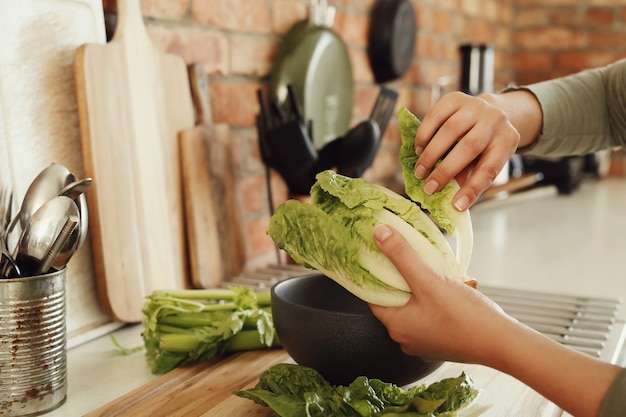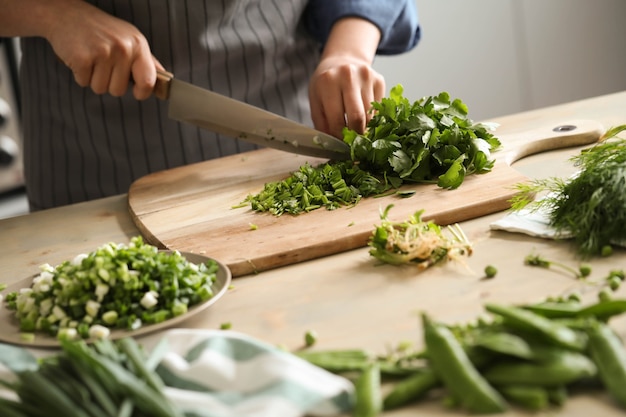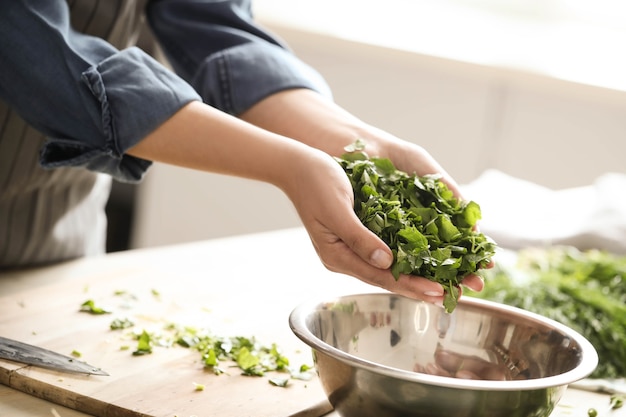collard greens are a true chameleon in the veggie world. They can be tough and chewy, or tender and melt-in-your-mouth. The secret lies in getting the cooking time just right. It's a bit of an art, but I'm here to share my experience and knowledge, and to help you cook collard greens to perfection!
Part 1: The Basics of Collard Greens

Let's start by understanding the star of our show. Collard greens are a member of the same family as kale and cabbage, known for their deep green leaves. They're a nutritional powerhouse, but some people find their flavour a bit strong, which is usually described as slightly bitter. I, for one, love that earthy, robust flavour! Think of them like a hearty spinach with an edge.
Where to Find Collard Greens
Collard greens are readily available in most supermarkets, typically in the produce section. When choosing, look for leaves that are a vibrant dark green, firm to the touch, and free from any blemishes or yellowing. You'll often find smaller bunches with younger, more tender leaves, and bigger bunches with larger, more mature leaves. The bigger the leaves, the longer they'll take to cook.
Preparing Collard Greens for Cooking
Now, let's get our hands dirty and prep those greens. It might seem intimidating, but it's really straightforward.
1. Washing and Removing the Stems
Start by giving those leaves a good wash. I usually use a large bowl filled with cold water and gently swish them around. Then, drain them thoroughly. Now, it's time to tackle those thick stems. There are a few methods: chopping them off, tearing the leaves off the stem, or even using the whole leaf. I prefer tearing them off, which gives me more control over how much stem remains. It's a bit like a mini-leaf-picking exercise!
2. Chopping the Collard Greens
With the leaves separated, we're ready to chop them. This helps them cook evenly and prevents a leafy mess. The size of the chop is up to you. I tend to chop them into strips about an inch wide, but feel free to go finer or coarser depending on your preference. It's all about personal taste!
Part 2: Cooking Methods

Now, for the fun part: actually cooking those collard greens! We have several methods to explore, each with its own unique charm.
Boiling
This is the traditional way, simple and effective.
1. Fill a large pot with water.
You'll need enough water to cover the collard greens by a couple of inches. Bring the water to a rolling boil.
2. Add the collard greens and salt.
Once the water is boiling, toss in the chopped collard greens and a generous pinch of salt. Salt seasons the greens and helps them cook evenly. Return the water to a boil, then reduce the heat to low, and simmer for around 30 minutes, or until the greens are tender. You can use a fork to test the texture.
3. Drain the collard greens.
When they're cooked through, drain them in a colander.
4. Serve and Enjoy!
Now you can enjoy them as they are, or add some butter, vinegar, or your favourite spices for extra flavour.
Sautéing
Sautéing is a faster method that adds a lovely smoky flavour.
1. Heat some oil in a large skillet or pan.
I prefer olive oil or vegetable oil for this. Medium heat is ideal.
2. Add the collard greens.
Once the oil shimmers, add the chopped collard greens.
3. Cook, stirring frequently.
Cook the collard greens for about 10-15 minutes, stirring often to prevent sticking. You can add a little water if they start to dry out.
4. Season and Serve!
When the collard greens are wilted and tender, season with salt, pepper, garlic powder, or your favourite spices. I like to add a squeeze of lemon juice at the end for a touch of brightness.
Steaming
Steaming is a healthy way to cook collard greens and preserve their nutrients.
1. Fill a steamer basket with collard greens.
Don't overcrowd the steamer basket.
2. Place the steamer basket over a pot of boiling water.
Make sure the water doesn't touch the bottom of the basket.
3. Steam for about 10-15 minutes, or until the collard greens are tender.
They're done when they're wilted and easily pierced with a fork.
4. Season and Serve!
Once cooked, season them with your favourite spices. I enjoy adding a pinch of smoked paprika for a smoky flavour.
Part 3: Tips for perfect collard greens

Now that you've got the basics down, let's fine-tune your collard green cooking skills.
1. Don't Overcook Them
Think of collard greens like a fine wine – overcooked, they lose their character. You want them to be tender, but still retain a bit of bite. Just like a perfectly cooked steak, a little bit of firmness is key!
2. Add a Little Acid
A splash of lemon juice, vinegar, or even some tomato juice can do wonders for the flavour. They brighten the greens and balance out the natural bitterness, creating a more harmonious taste.
3. Season With Love
Don't be afraid to experiment with different spices and seasonings. My go-to combination is garlic powder, onion powder, black pepper, and a hint of cayenne pepper. But you can also use smoked paprika, cumin, or even a dash of nutmeg for a more complex flavour profile.
4. Get Creative!
Think outside the box when it comes to using collard greens. They shine in soups, stews, salads, and even wraps. They can even be a substitute for lettuce in tacos and burritos. The possibilities are endless!
Part 4: Collard Greens and Nutrition
Beyond their deliciousness (which is a valid reason all on its own!), collard greens offer a wealth of nutritional benefits.
1. Rich in Vitamins and Minerals
Collard greens are a treasure trove of vitamins A, C, and K, plus folate, calcium, and iron. They're also a good source of fibre, which keeps your digestive system happy.
2. Antioxidant Powerhouse
Collard greens are loaded with antioxidants, which are like tiny superheroes that protect your cells from damage. They fight off harmful free radicals in your body, promoting overall health.
3. May Help Lower the Risk of Chronic Diseases
Research suggests that eating collard greens and other leafy green vegetables may help reduce the risk of chronic diseases, such as heart disease, stroke, and some types of cancer.
4. A Good Source of Vitamin K
Collard greens are especially rich in vitamin K, which plays a crucial role in blood clotting.
Part 5: Collard Greens in History
Collard greens have a fascinating history that spans centuries. They weren't always the trendy, healthy food they are today. Let's take a journey through time and discover their roots.
1. Origins in Africa
Collard greens originated in Africa, where they were cultivated in ancient Egypt. The Romans introduced them to Europe, and European settlers brought them to the Americas.
2. A Staple in Southern Cuisine
In the American South, collard greens have been a staple food for centuries. They were often cooked with pork, which imparted a smoky flavour and made them more palatable.
3. Symbol of Southern Heritage
Collard greens have become a symbol of Southern heritage and culture. They're a beloved part of family gatherings and holidays, representing tradition and warmth.
4. Gaining Popularity Worldwide
In recent years, collard greens have gained popularity worldwide as people become more aware of their nutritional benefits and versatile culinary applications. They're now a staple in various dishes, from salads to smoothies, embracing global palates.
Part 6: Variations of Collard Greens
Just like people, collard greens come in different forms, each with its own unique character. Let's explore some of these variations.
1. Smooth-Leaf Collard Greens
These are the most common type, featuring smooth, flat leaves with a slightly bitter flavour.
2. Curly-Leaf Collard Greens
These collard greens have curly, ruffled leaves, offering a more delicate flavour than their smooth-leaf counterparts.
3. Red Collard Greens
Red collard greens stand out with their red stems and leaves, adding a touch of vibrancy to the plate. They have a slightly sweeter flavour compared to other varieties.
Part 7: Cooking Time for Collard Greens
Let's tackle the cooking time, the crucial factor in achieving collard green perfection. Remember, there's no one-size-fits-all answer. It depends on the age of the greens, the cooking method, and your personal preference for texture.
1. Boiling
For boiling collard greens, allow 30-45 minutes, or until they are tender. Younger greens will cook faster than older greens.
2. Sautéing
Sautéing collard greens is much quicker, taking about 10-15 minutes.
3. Steaming
Steaming collard greens also takes around 10-15 minutes. The leaves will be wilted and easily pierced with a fork when they're done.
Part 8: Storage and Leftovers
You've cooked up a delicious batch of collard greens, but what about those leftovers? Let's make sure they don't go to waste!
1. Storing Collard Greens
To store fresh collard greens, wrap them in a damp paper towel and place them in a plastic bag. Store them in the refrigerator for up to 5 days.
2. Storing Cooked Collard Greens
Cooked collard greens can be stored in an airtight container in the refrigerator for up to 4 days. You can reheat them in the microwave or on the stovetop.
Part 9: FAQs
I'm sure you have questions about this green, leafy goodness! Let's get those answered.
1. Can I use frozen collard greens?
Absolutely! Frozen collard greens are a convenient option, especially if fresh greens aren't readily available. Use them the same way as fresh greens, but keep in mind they might take a little longer to cook.
2. What if my collard greens are too bitter?
If your collard greens have a strong bitterness, try adding a little lemon juice, vinegar, or tomato juice to the cooking water. You can also blanch the collard greens for a few minutes before cooking to help reduce the bitterness.
3. What are some good recipes for collard greens?
The possibilities are endless! Here are a few popular recipes to inspire you:
- Collard greens with smoked pork
- Collard greens with black-eyed peas
- Collard greens soup
- Collard greens salad
- Collard greens wraps
4. How do I tell if collard greens are bad?
Fresh collard greens should be firm and dark green. If the leaves are wilted, yellowed, or have slimy spots, they're likely past their prime.
5. What are the best collard greens for cooking?
Ultimately, the best collard greens for cooking are the ones you enjoy eating the most! Some people prefer smooth-leaf collard greens, while others favour curly-leaf greens. It comes down to personal preference.
Part 10: A Final Word
And there you have it! Collard greens are a versatile and delicious vegetable brimming with nutrients. With a little practice and guidance, you can master the art of cooking them to perfection. I encourage you to embrace the world of collard greens and enjoy the journey!
Everyone is watching

How to Cook Frozen Lobster Tails Perfectly: A Step-by-Step Guide
RecipesLobster. Just the word conjures up images of lavish meals, special occasions, and a taste of luxury. But let's...

Pigs in a Blanket Cooking Time: How Long to Bake for Perfect Results
RecipesAh, pigs in a blanket. Just the name conjures up images of those delightful little parcels of crispy pastry en...

Pork Fillet Cooking Time: How Long to Cook It Perfectly
RecipesPork fillet, or tenderloin as it's sometimes called, is a real favourite in our house. It's so versatile, and...

The Ultimate Guide to Cooking Delicious Frankfurters
RecipesLet's face it, we all love a good frankfurter. It's a classic, simple, and always satisfying. But let's be rea...

The Ultimate Guide to Tender, Juicy Pulled Pork
RecipesRight, let's talk pulled pork. It's one of those dishes that just screams "comfort food," doesn't it? I mean...
